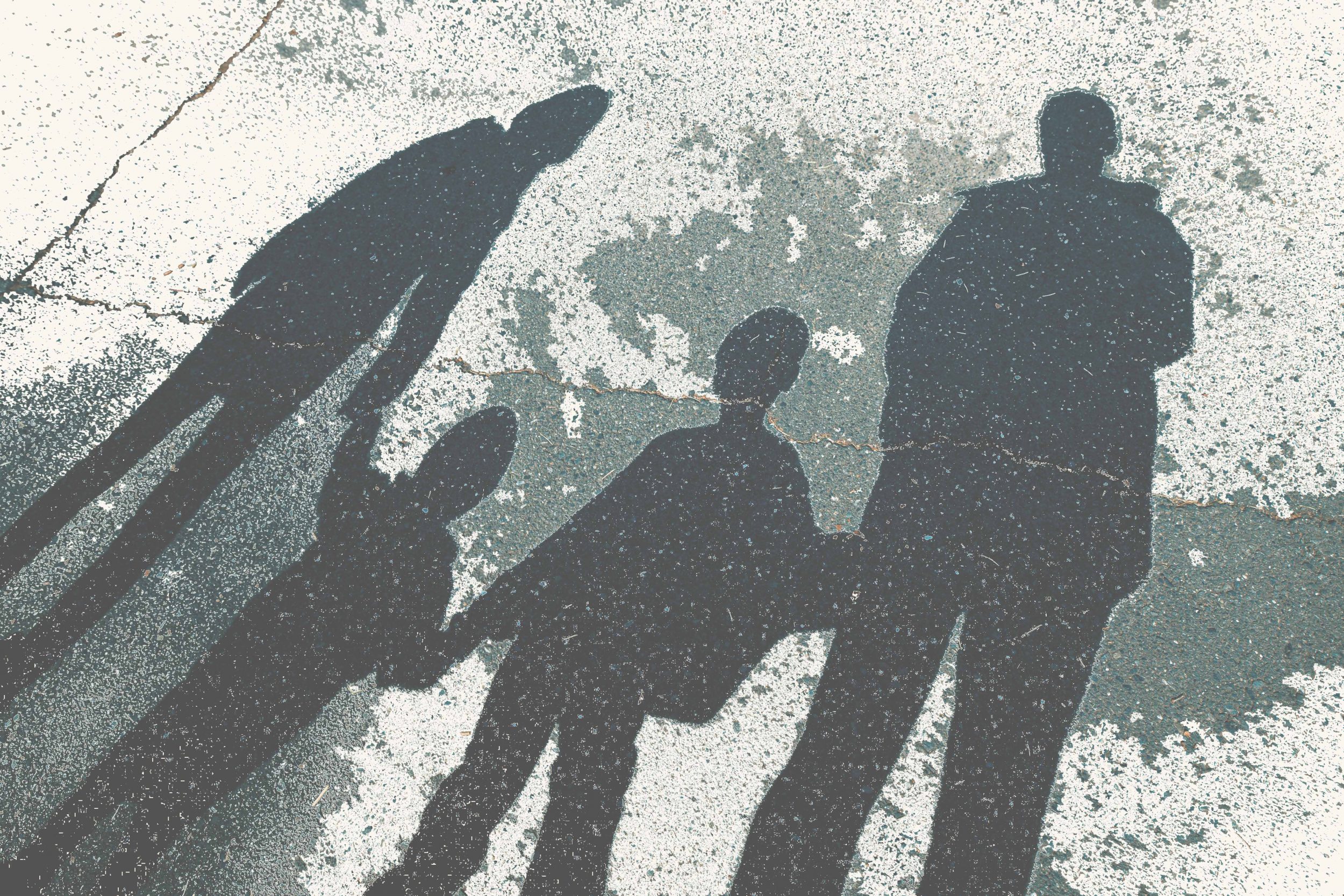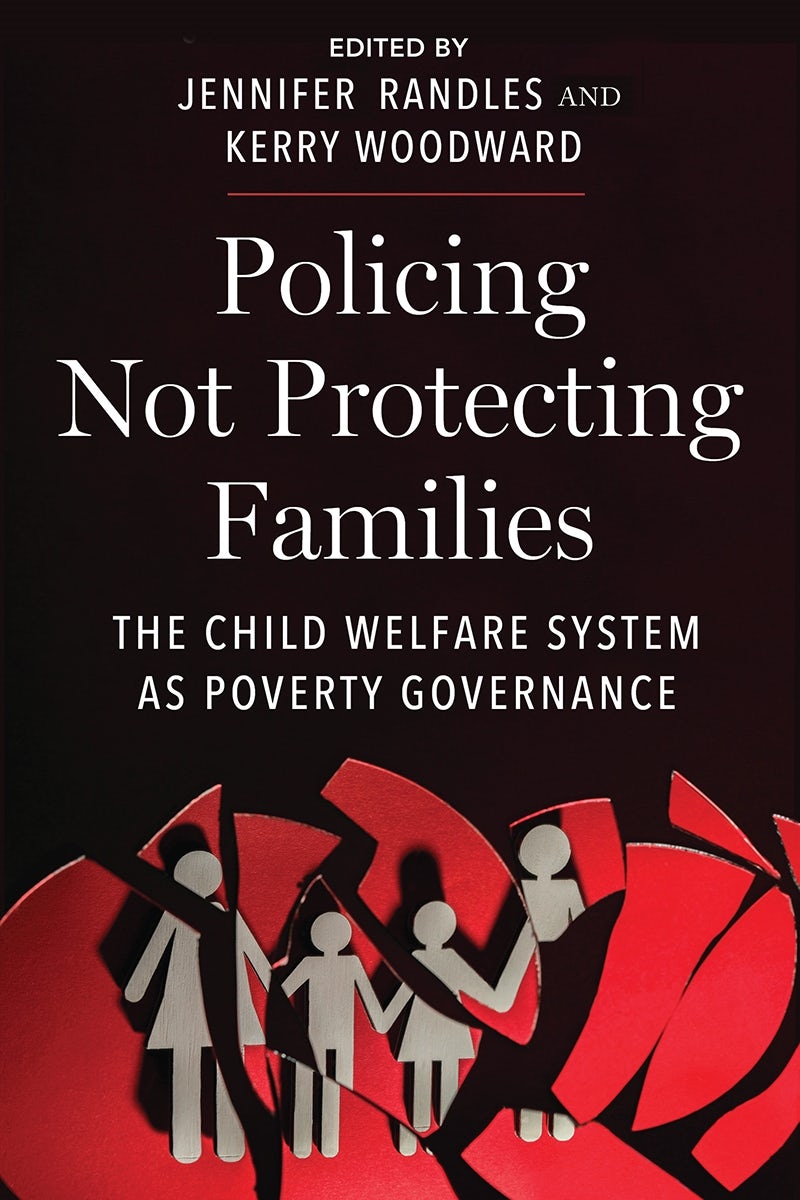The child welfare system, more accurately called the family policing system, is predicated on the subjugation, surveillance, control, and punishment of mostly poor and disproportionately Black and Native children and families. The system benefits from the widely held perspective that the family policing system is a legitimate, supportive helping system, a system that protects the safety and well-being of children through necessary state-sanctioned interventions. Yet the history and reality of the system’s impact on the lives of children, families, and communities underscore how the system functions to maintain poverty, anti-Blackness, white supremacy, racial capitalism, and settler colonialism.
The destruction of Black and Native families is foundational to the United States. Both Black and Native communities experienced displacement and significant domination under the grips of slavery and settler colonialism. While the Thirteenth Amendment ended the system of chattel slavery, family separations continued through forced apprenticeships of Black children established under the Black Codes. The making of what we now know of as the United States also required the attempted elimination and dispossession of Native communities, which necessitated children being torn from their families. This history of harming and separating Black and Native families is directly reflected in the organization of the family policing system today.
Today, more than half of all Black children in the United States are investigated by child welfare authorities. Native children are removed from their families at a rate nearly three times greater than their proportion in the overall population. Most of these families are also poor. Stories detailing the abuse and neglect of children while in foster care are routinely reported by journalists. The harm and trauma of state-sanctioned separation of children from their families—whether at the U.S.–Mexico border, through incarceration, or by way of family policing—are widely known.
Despite these facts, calls to address harms perpetuated by the family policing system remain focused on fixing the system through reforms that seek to increase racial equity, tweak how decisions are made about removal, provide preventative services, and implement better training for family policing agents. These reforms beg the family policing system to do the impossible: to perform family policing in ways that shrink the scale of family policing and give the appearance of making forced separation kinder and more acceptable. Fundamentally, and at times intentionally, reforms misdiagnose the problem of family policing and instead uphold and support the further expansion of racism and economic inequality.
Prior to the 1960s, Black children were largely excluded from family policing systems, as the bulk of “child welfare” services were intended to provide aid to white families experiencing extreme economic hardship primarily due to the death or disability of the father. As these poverty-relief efforts were expanded throughout the mid–twentieth century and more Black families became eligible for poverty-relief services, racist policies in the form of morality tests were established to limit their eligibility for these services, such as “home suitability clauses,” “man-in-the-house rules,” and “illegitimate child clauses.” These policies, combined with a shift in the focus of child welfare services from poverty relief to “child protection” in the 1960s—including mandatory reporting laws and an emphasis on family separation as a response to “neglect”—resulted in a rapid increase in Black children placed in foster care.
This phenomenon of racial oppression by the family policing system later became known as “racial disproportionality,” a term that originated from efforts in the juvenile punishment system to measure and understand disproportionate minority contact. By the end of the 1970s, Black children had become significantly overrepresented in this system. By 2000 Black children represented 38 percent of children in foster care, a rate more than double their proportion among the general child population. As of 2021, Black children remain nearly a quarter (22.8 percent) of all children forcibly separated from their parents and placed into foster care, although they represent only 13.8 percent of children in the general population.
More from our decarceral brainstorm
Inquest, finalist for the 2025 National Magazine Award for General Excellence, brings you insights from the people working to create a world without mass incarceration.
Sign up for our newsletter to get the latest in your inbox every Saturday.
Newsletter
Since racial disproportionality was first documented, researchers have debated its causes and whether it results from racial biases within family policing systems or from what some have called “disproportionate need” among Black families due to their higher rates of poverty and related risks for maltreatment. Yet this debate was largely created as a means of distracting from the real problem that both created and perpetuates disproportionality. Racial disproportionality in the family policing system exists because of racism. This racism is present both within family policing systems—not only in the form of explicit and implicit biases among decision-makers but also through implementation and enforcement of decades of policies that largely reflect a white, middle-class parenting standard—and within broader society.
In reality, “disproportionate need” is the result of centuries of structural and institutional racism that began with the forced enslavement and dehumanization of Black people and continues today through a government-maintained system of racialized poverty. From the Black Codes that followed the abolition of human chattel slavery to the Jim Crow laws that were deemed constitutional through 1964, the enduring consequences of these racist laws and policies include racial residential segregation, the increasing wealth gap, unequal access to quality education and health care, and inequities in housing and employment that each act to maintain the “disproportionate need” experienced by Black families. These issues are then compounded by the surveillance and disproportionate reporting of Black families to family policing systems, which trigger their involvement in a system governed by racist policies.
Thus, what has long been referred to as “racial disproportionality” or “racial disparities” is better described as “racist inequities,” as this term more accurately captures the underlying role of racism in contributing to longstanding inequities. Terms such as “racial disproportionality” obscure the role of racism in contributing to this problem, suggesting that the inequities in family policing systems exist through an unknown, passive cause that disproportionately impacts Black children. “Racist inequities” maintains the focus on the active racism that perpetuates the inequities in this system.
Over the past several decades, child welfare systems have identified and implemented many reforms in attempts to address “racial disproportionality,” although the intended goal of these reforms has been debated among scholars. Those who have supported theories of “disproportionate need” and criticized efforts to lessen disproportionality argue that, since involvement in the family policing system is based on need, “proportional” representation should not be the desired goal. Rather, these scholars argue that Black children should be disproportionately involved in this system due to “disproportionate need” and thus that they should be forcibly separated from their families at greater rates than white children are.
Despite the racism embedded within these critiques, these views influenced many of the family policing system’s efforts to address racist inequities throughout the 2010s. The debate that emerged regarding the causes of racist inequities, and the subsequent critiques of efforts to address disproportionality through anti-racism training or other efforts to address racial bias, left many people in family policing systems unsure of how to proceed. Many systems discontinued their efforts to address racial disproportionality, while many funders also discontinued their support of antibias training and other efforts to target biases in decision-making.
Then, after nearly a decade of inattention, this stalled response dramatically changed following the murder of George Floyd in May 2020. As awareness of the vast harms inflicted on Black Americans by the police and policing grew, activists and scholars began to draw parallels between the harms of policing and the harms caused by the family policing system, with several calling for full abolition of the family policing system as a means of ending these harms. Since that time, “racial equity” has emerged as the goal to address the racist inequities of the family policing system.
The logic of racial equity as a goal makes sense on its surface. The existence of racial disproportionality has long been understood as a problem because Black children are disproportionately overrepresented among children in foster care compared to their proportion in the general population. So the logical solution to this problem would be proportional representation, meaning that Black children are represented among children in foster care at a rate equivalent to their proportion in the population.
Yet the family policing system is not a benevolent helping system, and racial disproportionality is not a problem because of disproportionate representation. Racial disproportionality is a problem because of the racist abuse and harm inflicted on Black Americans by family policing intervention. Forcible family separation is a source of significant and lifelong trauma, regardless of how long this separation lasts. Beyond this initial trauma, decades of research have documented that children who are subjected to placement in foster care are at risk for a host of adverse outcomes as adults, including poverty, low educational attainment, homelessness, unemployment, mental health disorders, and incarceration by the criminal punishment system.
Thus, efforts to address “racial disproportionality” with a goal of racial equity obscure the harm inherent in family policing intervention and the oppression that this intervention produces for Black children and families. Simply producing “equity” in a system responsible for harm, racism, and oppression fundamentally misunderstands the problem it intends to address. And equitably distributing harm will still disproportionately impact Black children and families because of the racism and oppression they already face. Ultimately, goals of “racial equity” within the child welfare system obscure and ignore the real harm the child welfare system produces. Equitable harm is still harm, and thus, racial equity cannot be the goal for the family policing system.
The racist inequities that exist in the family policing system, and the harm and oppression that result, have been known for decades. Despite decades of reforms to address these issues, these reforms—as well as the current goals of racial equity—fundamentally misunderstand and misdiagnose the problem they seek to address. Reforms have failed to result in meaningful change because they have focused primarily on system improvements, while the foundational intervention on which child welfare systems are built—the forcible and involuntary separation of children from their parents—has remained unchanged.
These efforts have failed because they have focused on improving a harmful system rather than eliminating harm. The vision for the future of the family policing system must be a vision of abolition. The racist origins of family separation and the racist intent on which the system is built are so deeply rooted in its policies and structures that they cannot simply be revised or reformed. Reforms rely on mechanisms that seek to change how and to what degree children, families, and communities are oppressed and harmed, but they do not seek to end oppression and harm.
Abolition, on the other hand, involves simultaneously ending the racist structures that produce harm and building resources and supports designed by families and communities that promote the safety and well-being of children in their homes. This does not mean the creation of a stronger welfare state—this means the creation of a new society where the concept of “welfare” does not exist because all families have what they need.
Abolition of harmful systems that perpetuate racist inequities is the only way forward if we are to truly achieve a just and healthy society. Now is the time to critically reevaluate the use of forced family separation as an intervention for families who must navigate a society inundated with racism, discrimination, and unequal access to resources and opportunities. Perceived or actual benefits of foster care can be achieved through alternative means—such as quality public education, free public college, and guaranteed income—that do not inherently impart harm. By applying a strengths-based perspective in place of the existing deficit lens, we can begin to identify and amplify the strengths of families and communities and then use those to develop proactive and restorative courses of action. These can be used as the basis for redirecting funds that are currently used to maintain a massive system of foster care and instead begin the process of divesting from a harmful and oppressive system and investing in the safety and well-being of children, families, and communities.
In calling for abolition, we recognize that there are extreme cases of abuse and neglect that occur in society. We also recognize that family policing agencies have often been unable to prevent harm to children—even with their coercive power of family separation—and often this harm occurs to children under their supervision. In this recognition, we seek to understand why we live in a society where such harm occurs and how we can support the creation of a society where such harm does not occur.
Abolition does not mean abandoning the need to protect children; it means building new ways of protecting and supporting families that also eliminate coercive systems of surveillance and punishment. When harm does occur, we seek solutions for harm that are non-carceral and do not rely on state-sanctioned family separation as a means of addressing harm. In some cases, communities will need to work intensely, invest heavily, and collaborate creatively to ensure that children are safe and that families stay together—to render the use of state surveillance and separation obsolete because, in its place, we have collectively created the conditions for all children, youth, and families to truly thrive.
Importantly, the family policing system is just one part of the carceral web. From incarceration to immigration detention to family policing, we oppose the surveillance and state-sanctioned separation of children from their families in all forms. We build on the work of reproductive justice, which centers bodily autonomy and asserts that parents should have the power to make decisions about how and when they will parent and the ability to raise their families in conditions that are free of oppression. We also recognize that reparations are key to abolition; beyond necessary monetary payment, we believe that true reparations require the dismantling of the structures that produce harm.
In other words, we seek to build a world where the care, support, and well-being of children, families, and communities are fully realized.
Excerpted from Policing Not Protecting Families: The Child Welfare System as Poverty Governance, edited by Jennifer Randles and Kerry Woodward, reprinted with permission from NYU Press.



